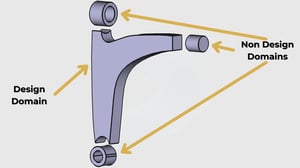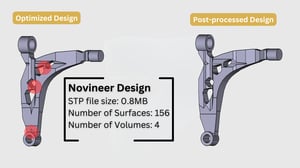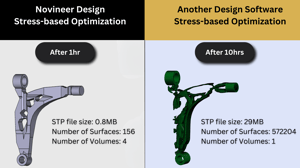Strength vs. Stiffness Design
Novineer distinguishes itself with superior optimization for stiffness and strength, using material-specific failure criteria to ensure robust, tailored designs.

Advanced Optimization Techniques in Engineering Design
Utilizing material-specific failure criteria to ensure robust and tailored designs

Novineer excels in both stiffness-based and strength-based optimization, utilizing the von Mises, Tsai-Hill, or Tsai-Wu failure criteria depending on the material properties. The first step in the design process is to select the design and non-design domains to ensure that stress near the load or boundary contact does not affect the design process. All strength-related properties, such as tensile, compressive, and shear strengths, are incorporated into the failure criterion during the optimization process. By incorporating these properties, Novineer ensures a comprehensive and robust optimization process, even for anisotropic parts.
Advancing Design Through Performance and Editability
Streamlined CAD integration for enhanced design modification
Novineer design technology provides options for maximizing performance and/or improving both performance and editability. If the user chooses the "optimizing performance+editability" design methodology, they will receive an STP file that is only 0.8MB and contains 156 surfaces. This file can be easily uploaded to any CAD software and modified as needed. For example, two modifications include a smooth transition from the bottom circular non-design volume to the design volume, and rounding off sharp corners to reduce stress concentrations.

Beyond Editability: Pioneering Strength-based Design
Overcoming design challenges with efficiency and editability

Novineer's edge isn't just in its editable designs; it excels in delivering efficient strength-based designs where others may falter, regardless of surface count. For instance, a design from another software featured an overwhelming 572,204 surfaces, complicating any modifications. Furthermore, the design failed to effectively transfer loads from their points of application to support points.

